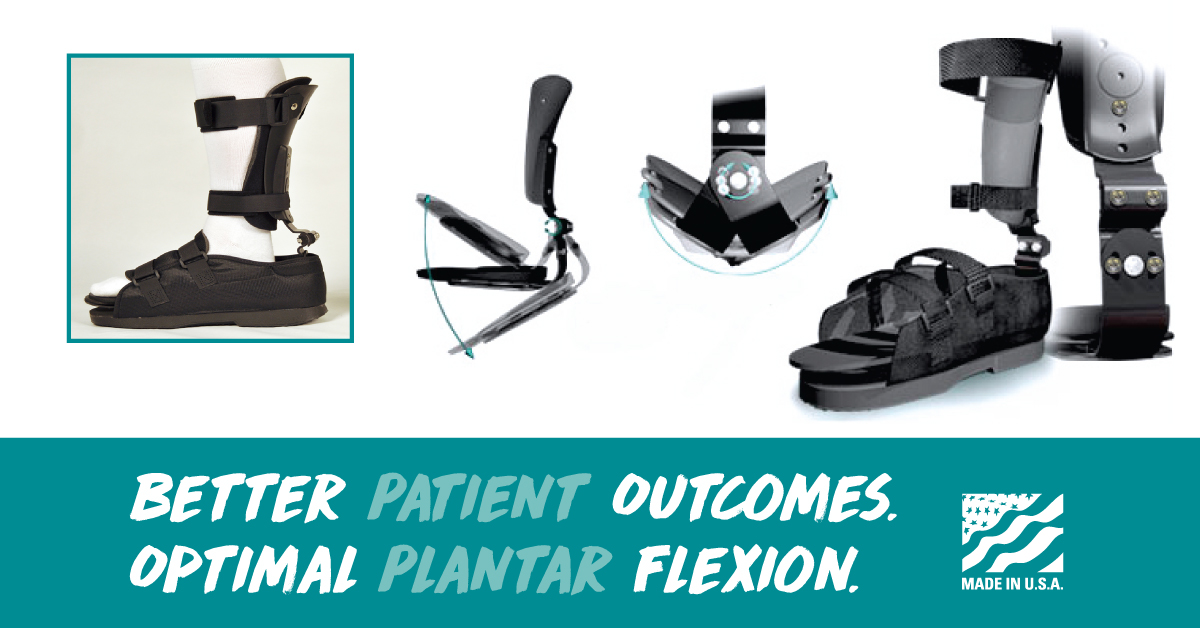
Walking, running, biking, swimming: physical activities you've come to know and enjoy wouldn't be possible without an unsung hero. Even something as nonchalant as standing would present difficulties if we humans did not have access to key joint functionality.
Plantar Flexion is Critical to Moving About Our Day
We're referring to the plantar flexion – or plantarflexion. Many of our daily activities would be implausible. Simply put, plantar flexion is a form of mobility in which the top of the foot points away from the leg, featuring a normal range of motion between 20 and 50 degrees from the resting position. It serves as an extension of the ankle and relies on muscles and tendons in the leg and foot.
With great responsibility comes great risk, and the plantar flexion is susceptible to injury. Any type of muscle damage in the lower extremity region can significantly limit the foot's range of motion. When an injury occurs, such as a fracture or sprain, the area swells up and becomes inflamed, limiting mobility. Subsequently, the plantar flexion is greatly reduced.
Treating Plantar Flexion Deficiency
So, how can a patient suffering an injury effectively mobilize and strengthen their plantar flexion? Typically, physicians prescribe an ankle-foot orthosis (AFO) for individuals experiencing gait deviations related to muscle weakness or deformities. Over time, the brace has become known as a "foot-drop orthosis" because of its ability to adjust a limb with weakened or contracted muscles into a more normal position. However, less obvious is its role for plantar flexion muscles.
Plantar flexion is dependent on the tibia, fibula and ligaments of the ankle for stability. In the event of an injury, the ankle dorsiflexion is weakened, causing the knee to flex. As a result, a patient with a depleted plantar flexion will need compensation, and that's where an AFO can serve as a viable substitute.
When weight is applied on an AFO, its posterior walls transfer the ground reaction force and direct it against the tibia during the mid-stance and terminal stance. Correspondingly, this action controls the tibia movement that counters the ground reaction force to dorsiflex the ankle. The AFO's ability to avert the ground reaction force produces a plantar flexion movement that can ensure adequate support during the healing process.
ABBY™ Orthosis Provides Comfort and Superior Support
When dealing with an injury or deformity that requires an AFO, there are many options available for treatment. If you are a patient, please seek the recommendation of your physician. But, if you're conducting research and want to consider a specific brace, the ABBY™ is an effective solution for early intervention.
The ABBY articulating ankle and foot orthosis is a multi-functional posterior dual-jointed AFO. With an established support base for ambulation, it replicates the biomechanical effects of a semi-sold or PLS AFO.
ABBY Orthosis Quick Features
- Adjustable foot length and calf height
- Heat-moldable foot orthotic
- Clinically proven multifunctional ambulatory articulated AFO
- Adjustable dorsiflexion (+ or – 20 degree) plantar flexion (+ or – 40 degree)
To learn more about ABBY, we invite you to visit our product page and explore the many features and functionality of this all-in-one AFO system.
 330-757-3569
330-757-3569





